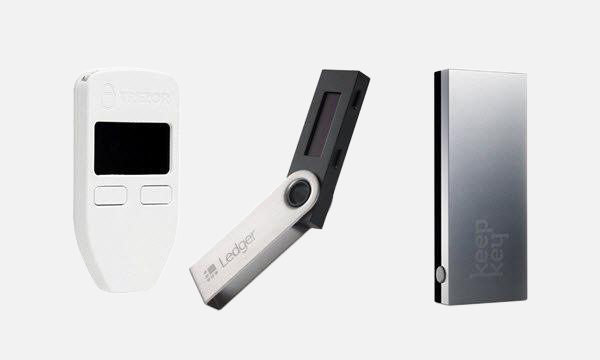Trezor vs Ledger vs Keepkey: Which is The Best Cryptocurrency Hardware Wallet?
Hardware Wallets
Hardware wallets, also known as cold wallets, offer greater security than software wallets as they are not connected to the internet and are far less susceptible to hacking or theft. Still, it is important to remember that they are not completely foolproof. It could have a bad random number generator (making it susceptible for hackers to guess the private key), bugs, or have been tampered with during either the delivery or manufacturing process. By choosing a reliable manufacturer, however, you can reduce most of these risks.
Read More: Hardware Wallet Definition
Key features of a hardware wallet often include: the ability to generate and store a private key on the device; the ability to execute all transactions on the wallet; the inability to install software on the device; compatibility with Windows, Linux and MacOS; and a requirement to have a PIN code to operate the device. Users should compare different features available in each wallet, including price, design, ease of use, the number of supported currencies, and of course, security.
We’ve taken the liberty of reviewing the key characteristics of three hardware wallet market leaders: Trezor, Nano Ledger S and KeepKey to inform you of the benefits and disadvantages of each, and how each wallet measures up with the other two competitors.
Wallet Comparison
Name | Trezor | Ledger | Keepkey |
| Supported Coins | 700 | Over 712 | 45 |
| Exchange Integration | Changelly | Etherdelta, Radar Relay | Shapeshift |
| Anonymity | Medium | Medium | High |
| Ease of Use | Average | Difficult (for beginners) | Easy |
| Transfer Fees | Dynamic fees | Feeds for bitcoin transfers determined acc. to Satoshis per byte | Fastest and cheapest is 8 satoshis/byte |
| Cost | $78 - $169 | $100 | $129 |
| Operating System | Windows, Mac and Linux | Windows, Mac and Linux | Windows, Mac and Linux |
| Private Keys | Controlled by owner | Controlled by owner | Stored on device |
| Website | Trezor | Ledger | Keepkey |
Price
Once the market leader and the only Bitcoin hardware wallet on the market, Trezor has faced serious competition from Ledger Nano S and KeepKey, both secure, safe and user-friendly hardware wallets. As a result of this competition, the price of Trezor has decreased in recent years. Although Trezor has lowered its price in recent years, it is still often perceived as the more expensive option for hardware wallets. At $129 for each wallet, KeepKey also has a reputation for being pricey compared to these other two competitors.
Hardwallet |  Trezor |  Ledger |  Keepkey |
Price | $78 - $169 | ~$100 | $129 |
Supported Currencies
Of the three, Ledger Nano Pro supports the widest variety of cryptocurrencies (over 712). Ledger’s popularity increased significantly after it announced its support for Ripple. The wallet recently announced its plans to support more than 100 different tokens by the end of next year, including stablecoins. However, Trezor comes up close behind it by offering a vast array of supported coins (700), medium anonymity, and exchange integration with Changelly. Recently, Trezor announced that it would support 10 more cryptocurrencies, including Monero, Cardano, Stellar, Ripple, Tezos and Zencash. Recently, Keepkey has announced that it will support Bitcoin Cash transactions during the upcoming fork that was announced in August 2017 and scheduled for mid-November of this year.
Safety and Security
These three hardware wallets have top-notch security, and as they are hardware wallet, the risk that you will be hacked is very low. The screens of each device assist you in backing up your wallet in the event of a lost or stolen device.
Each device has a different way of ensuring security. Trezor in particular is known to be so safe that it can even be used with computers that have been infected with malware or hacked. It offers a passphrase to guard you coins against being stolen in the even your Trezor wallet is stolen. Shapeshift acquired KeepKey in August 2017, bringing it more funding which it planned to be used for increased inventory and better security. With its PIN code, recovery sentence and passphrase, it is known as one of the most secure HD wallets in the marketplace. Since it stores private keys offline, Ledger Nano Pro’s security is also considered to be one of the best in the marketplace.
Design
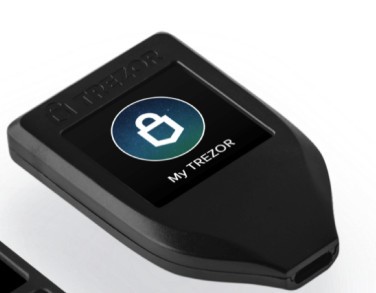 |
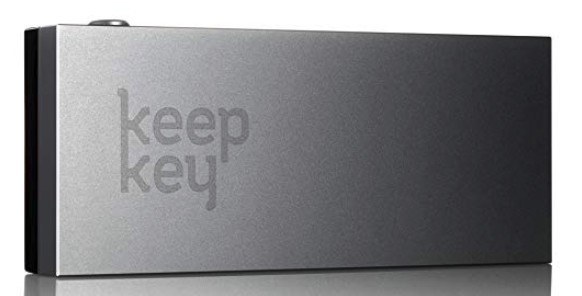 |
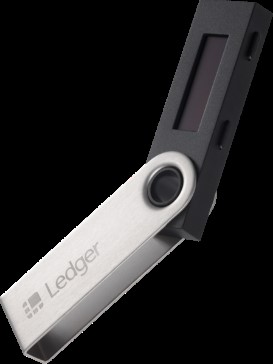 |
KeepKey is the most aesthetic wallet out of the three hardwallets listed here, and is known for quickly supporting new currencies. Launched in 2015 and based in Seattle, KeepKey has become a favorite open-source wallet of cryptocurrency traders. It was also famous for being the first hardware wallet with a screen, allowing users to run a backup without attaching it to a desktop computer. Out of the three options, it has been the best for users looking for a trendy-looking device that is also user-friendly.
But now Leger Nano S has new models which compete strongly with KeepKey’s design. In celebration of Bitcoin’s 10-year anniversary and Satoshi’s White Paper, Ledger Nano S has announced its release of a White Paper Edition, with white casing and special engraving. This model is more aesthetically pleasing than past models. They have also recently made their hardware wallet available in different pastel colors, which you can see on their website.
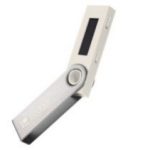 Ledger Nano S White Paper Edition Ledger Nano S White Paper Edition |
 Ledger Nano S in Jade Green Ledger Nano S in Jade Green |
 Ledger Nano S in Flamingo Pink Ledger Nano S in Flamingo Pink |
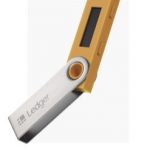 Ledger Nano S in Saffron Yellow Ledger Nano S in Saffron Yellow |
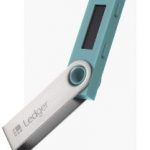 Ledger Nano S Lagoon Blue Ledger Nano S Lagoon Blue |
On the other hand, traders looking for daily access to a cryptocurrency wallet might find Ledger Nano S to be a bit cumbersome. That’s because it requires you to plug it into an USB to access your coins. It also has a reputation for not being a good hardware wallet for beginners, due to it being a bit complex. Compared to the Ledger Nano S, Trezor can be a bit clunky for cryptocurrency users wanting to be able to carry around their currency wherever they go, like they might with fiat currency in a real wallet. Those who are a bit clumsy should keep in mind that Trezor is made from durable plastic which is quite resistant to breaking or shattering from simply dropping on the ground.
Screen Size
KeepKey also boasts the biggest screen out of the three wallets, making it easier to see data. The screen makes it larger than the other two wallets, unlike the Leger Nano which is the size of a USB stick. The advantage of a bigger screen is that you can see more data about your transactions and stored coins at once.
Ease of Use
If you’re an experienced cryptocurrency trader with many different cryptocurrencies and are looking for the lowest hardware wallet price in the market and closed-source firmware, Ledger Nano S is the choice for you.
In contrast, Trezor is known for being easy to use, making it a good choice for beginners. In addition, the original Trezor hardware wallet has been given a firmware update, allowing users to connect Google Chrome to their Trezor Wallet directly, and even to an Android phone or Chromebook.
In addition to not having the same consumer trust as Ledger Nano S or Trezor, KeepKey is also known to be slow to add new features and support for Bitcoin forks.
All of these wallets however can be set up in a couple of minutes and can be used with a micro USB cable. They can also all be used as part of a Chrome extension.
Our Recommendation
The best hardware wallet for you is dependent exclusively on your own preferences and experience using these devices. For the uninitiated, the Ledger may represent a difficult learning curve given that users need to pick their own gas limits on transactions and integrate third-party wallet software for some cryptocurrencies. Trezor is easier to use, with a more practical interface and a better entry price as well. It also has a bevy of safety options such as the ability to create dummy wallets on the same device which may prevent physical theft or extortion. In terms of ease of use, KeepKey requires some technical prowess and familiarity with open source concepts. It also has the least support for cryptocurrencies, and is far bulkier, despite its polished design.
At the end of the day, the Ledger is for those who already dabble in cryptocurrency and want a slim, portable device that keeps any of their cryptocurrencies safe. The Trezor excels at being a simple “plug and play” wallet, as it doesn’t require much configuration and also supports a wide variety of coins from the outset. Finally, those who want a large screen with more information and who don’t care much for mobility nor the variety of altcoins, KeepKey represents a premium option. It can be used as a simple BTC hard wallet or modded in various ways though this does require some programmatic prowess. Regardless of which you choose, you’ll enjoy a safe and reliable experience, as long as you remember to thoroughly read into the user manual and take the proper precautions with your private key.


